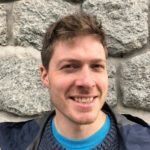Link to Pubmed [PMID] – 32295590
Link to DOI – 10.1186/s12936-020-03227-3
Malar J 2020 Apr; 19(1): 152
KwaZulu-Natal, one of South Africa’s three malaria endemic provinces, is nearing malaria elimination, reporting fewer than 100 locally-acquired cases annually since 2010. Despite sustained implementation of essential interventions, including annual indoor residual spraying, prompt case detection using malaria rapid diagnostics tests and treatment with effective artemisinin-based combination therapy, low-level focal transmission persists in the province. This malaria prevalence and entomological survey was therefore undertaken to identify the drivers of this residual transmission.Malaria prevalence as well as malaria knowledge, attitudes and practices among community members and mobile migrant populations within uMkhanyakude district, KwaZulu-Natal were assessed during a community-based malaria prevalence survey. All consenting participants were tested for malaria by both conventional and highly-sensitive falciparum-specific rapid diagnostic tests. Finger-prick filter-paper blood spots were also collected from all participants for downstream parasite genotyping analysis. Entomological investigations were conducted around the surveyed households, with potential breeding sites geolocated and larvae collected for species identification and insecticide susceptibility testing. A random selection of households were assessed for indoor residual spray quality by cone bioassay.A low malaria prevalence was confirmed in the study area, with only 2% (67/2979) of the participants found to be malaria positive by both conventional and highly-sensitive falciparum-specific rapid diagnostic tests. Malaria prevalence however differed markedly between the border market and community (p < 0001), with the majority of the detected malaria carriers (65/67) identified as asymptomatic Mozambican nationals transiting through the informal border market from Mozambique to economic hubs within South Africa. Genomic analysis of the malaria isolates revealed a high degree of heterozygosity and limited genetic relatedness between the isolates supporting the hypothesis of limited local malaria transmission within the province. New potential vector breeding sites, potential vector populations with reduced insecticide susceptibility and areas with sub-optimal vector intervention coverage were identified during the entomological investigations.If KwaZulu-Natal is to successfully halt local malaria transmission and prevent the re-introduction of malaria, greater efforts need to be placed on detecting and treating malaria carriers at both formal and informal border crossings with transmission blocking anti-malarials, while ensuring optimal coverage of vector control interventions is achieved.

